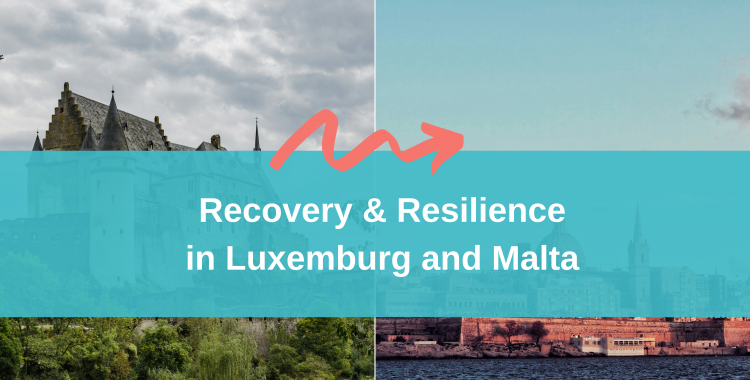As a follow up to our Comparative analysis on the Impact of the Recovery Plans on the social and affordable housing sector, two new country profiles are published each month. Now it is the turn of Luxemburg and Malta. Let’s see the highlights of these Plans below:
Luxemburg
Luxembourg’s allocation amounts to around €93 million and the projects pre-selected by the government are based on three pillars, namely: cohesion and social resilience, green transition and digitalisation, innovation.
Relevant parts include
- Component 1 ‘increase the offer of affordable and sustainable public housing’
Under the Pillar 1 Cohesion and social resilience.[1]
The measure has a €51.46 million envelop, of which €24 million (47%) is covered by the RRF.
Affordable public housing will either be newly built or acquired on the real estate market and will undergo a major renovation work. For the portion of existing housing to renovate, this component is therefore in line with the objectives of the European flagship initiative “Renovate.” This component responds at the same time to the CSR which called on Luxembourg to ‘increase the supply of housing’.
A total of at least 1,200 affordable housing units will be put on the market between 2022 and 2025.
- Component 2 ‘Project « Neischmelz » in Dudelange’
Under the Pillar 1 Cohesion and social resilience[2]
The project aims the conversion of a 40-hectare industrial wasteland within the city of Dudelange, with an urban planning concept that also takes into account the industrial heritage of the region. The Housing Fund, a public developer, is the master project’s work. In the long run, the construction of more than 1,000 housing units on this site will enable to accommodate nearly 2,300 people. More than half of the units will be for affordable rental. In addition, the project aims to build 10.000 m2 PV on the surface.
Malta
Malta benefits from €316.4 million in grants under the RRF. Malta will not use loans.
As for the structure, The plan covers six areas, including sustainable transport, circular economy, clean energy and energy-efficiency in buildings, digital transformation of the public administration and the legal system, projects targeting the health and education sectors, as well as institutional reforms.
Relevant parts include
- Component 1: Addressing climate neutrality through enhanced energy efficiency, clean energy and a circular economy (€ 78 million)
The component includes investments in the renovation of a number of public buildings, public schools and hospitals, and support the renovation of private buildings (€ 30 million). Each renovation is expected to reduce direct and indirect GHG emissions by at least 30%.
Investments under Component 1 also cover the promotion of renewable energy generation and use in buildings, roads and public spaces. These initiatives address the challenges outlined in CSR3 of 2019 and 2020 relating to the green transition.
Reforms include:
- The development of a long-term renovation strategy as a key action of Malta’s efforts for Clean Energy and to achieve the decarbonisation of the building stock by 2050;
- The launch of a training and certification programme to ensure a sufficient and diversified pool of staff with appropriate expertise;[3]
- The fostering of effective waste management through a robust waste governance framework including reforming the waste collection system and actions envisaged in the forthcoming Construction and Demolition Waste Strategy, such as the completion of a study and legislation to extend producer responsibility to additional waste streams and
- the reform of the waste collection system by regions, including packaging waste.[4]
Please download the country profiles for more details.
[1] Page 45, RRP of Luxemburg
[2] Page 50, RRP of Luxemburg
[3] Page 55, Assessment of the European Commission https://ec.europa.eu/info/sites/default/files/com_2021_584_swd_en.pdf
[4] Page 39, Assessment of the European Commission https://ec.europa.eu/info/sites/default/files/com_2021_584_swd_en.pdf
